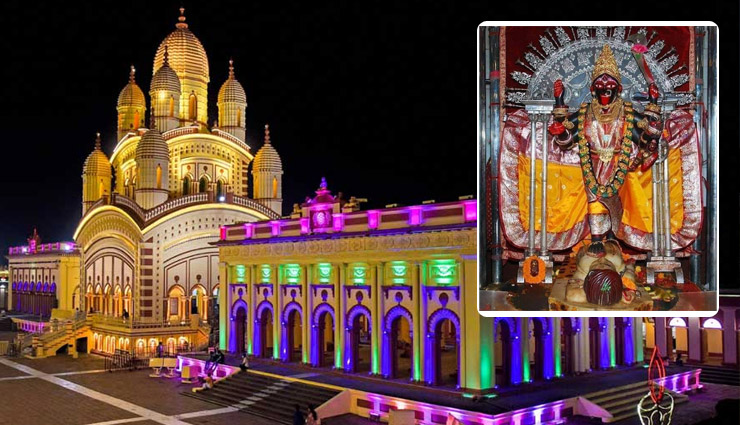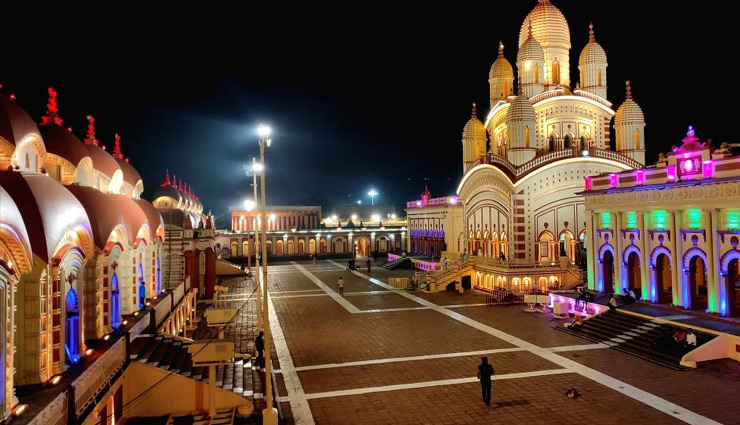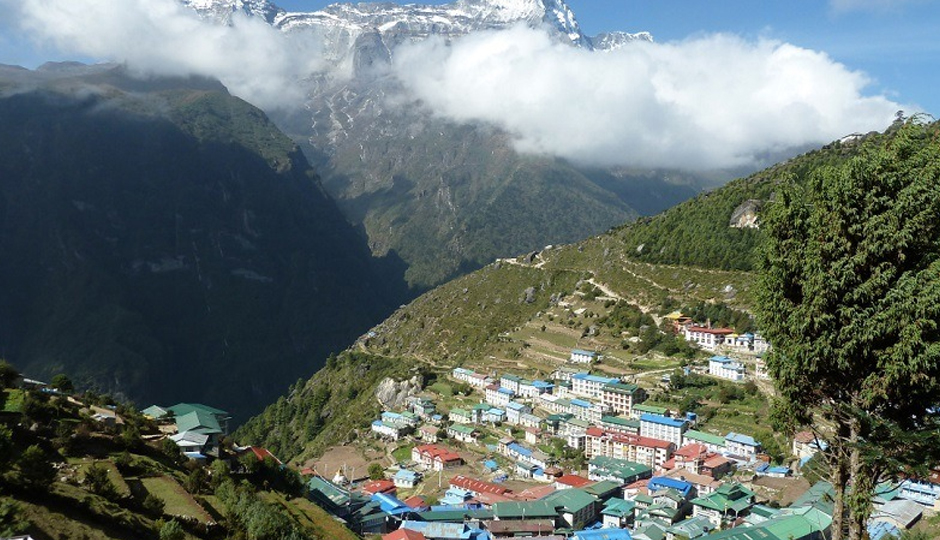Navratri 2024- Everything You Need To Know About Dakshineswar Kali Temple, Kolkata
By: Priyanka Maheshwari Fri, 27 Sept 2024 12:14:57

During the time when India was grappling under British rule and striving to adapt to the English-imposed conditions, a wave of patriotism surged among the valiant soldiers of Barrackpur. This fervor culminated in the Sepoy Mutiny of 1857, ignited by events near the future site of the Dakshineswar Temple. Kolkata, then the capital of India and the second largest city in the British Empire after London, became a center for this newfound spirit of nationalism. Among its notable figures was the courageous and devout Rani Rashmoni, a pioneer of silent resistance against foreign dominance.
Dakshineswar in the Early 1800s
In the early 1800s, Dakshineswar was a quaint village on the eastern banks of the River Ganga. J. C. Marshman described it in the January 1845 issue of the Calcutta Review, noting, “A little higher up we have the village of Dukhinsore, remarkable chiefly for the country seat, mapped down in the map of Hastie's Garden, but which has repeatedly changed hands during the last thirty years.” The village was flanked by dense forests, and it was about 300 years ago that members of the prominent Savarna Roy Choudhury family, Durgaprasad Roy Choudhury and Bhavaniprasad Roy Choudhury, settled there. One of their descendants, Yogindranath, was a devoted follower of Sri Ramakrishna, later known as Swami Yogananda.
Rani Rashmoni: Founder of the Temple
Rani Rashmoni, the visionary behind the Dakshineswar temple dedicated to Goddess Kali, was inspired by a dream she had while preparing for a pilgrimage to Benaras. This vision fulfilled a long-held desire she had to build a Kali temple after her husband passed away with that wish unfulfilled. A dynamic leader, Rani Rashmoni took charge of her husband’s extensive estate, often clashing with rigid British laws and policies. Her courage and benevolence earned her the love and respect of the people. The Dakshineswar temple, along with bathing ghats, a route from the Subarnarekha River to Puri, the Imperial Library (now the National Library), and Hindu College (now Presidency College), are testaments to her philanthropic spirit.
Land Acquisition
Driven by her dream, Rani Rashmoni directed her trusted aides, especially her youngest son-in-law, to scout for land to construct the Kali Temple. After an extensive search, a 20-acre plot in Dakshineswar was chosen, resembling a tortoise's hump. This land included a section owned by a European Christian and another that was a Muslim burial ground. The Rani began building the temple on this site in 1847, symbolizing the integration of different faiths. The Deed of Endowment states, “In order to fulfill his wish, on 6th September 1847 I purchased 54.4 bighas of land at the cost of Rs. 42 thousand and 500 from James Hasty. I made to build a puca Navaratna temple, twelve Shiva temples (twelve jyotirlingam), a Vishnu temple, and a Natmandir on the land.” This deed was executed on 31st May 1855.
Swami Saradananda noted in Lilaprasanga that the Kali temple complex originally encompassed 60 bighas, though later calculations indicated it was about 54.5 bighas. Some of the land was eventually repurposed for a railway line and the Vivekananda Bridge, reducing the current size to approximately 58 bighas.

Installation of Ma Kali
The installation of the deities was set for 'Snana Yatra,' an auspicious day in the Hindu calendar. On 31st May 1855, over 100,000 Brahmins were invited from various parts of the country to honor this significant occasion, amidst controversy regarding the Rani's low birth status.
Aware of these challenges, Rani Rashmoni consulted extensively with scholars and pundits, ultimately receiving a suggestion from Ramkumar Chattopadhayay, Sri Ramakrishna's elder brother. He proposed dedicating the temple to a Brahmin, which would resolve the issue. Consequently, the temple was dedicated to the Rani's Guru, with Ramkumar serving as the head priest, who installed the idol of Kali with great pomp on 31st May 1855. Numerous scholars and Brahmin pundits from places like Kashi, Orissa, and Navadvip attended the ceremony. Tragically, Ramkumar passed away within a year, leaving the responsibility to his younger brother, Ramakrishna, who became an ardent devotee of Kali and played a crucial role in transforming the socio-religious landscape of Bengal.
The open-minded Rani desired that devotees of all castes and religions could worship at the temple. Her vision was realized as Dakshineswar became a pilgrimage site for millions, celebrated for its serene atmosphere.
Handover of Legacy to the Temple Trust
Rani Rashmoni lived only five years and nine months after the temple's inauguration. In 1861, upon realizing her imminent death, she chose to bequeath the properties she had acquired in Dinajpur (now in Bangladesh) to the temple trust for its upkeep. She completed this transfer on 18th February 1861 and passed away the following day.
Related Stories:
# 10 Beautiful Beaches To Explore in Thailand
# Navratri 2024- 14 Interesting Facts To Know About Harsiddhi Durga Temple, Ujjain
# Navratri 2024- A Brief History of Chamundeshwari Temple, Mysore, Karnataka
# Navrati 2024- Reasons Why Devi Patan Temple, Uttar Pradesh is Famous
# Navratri 2024- Interesting Things To Know About Bamleshwari Devi Temple, Chhattisgarh





